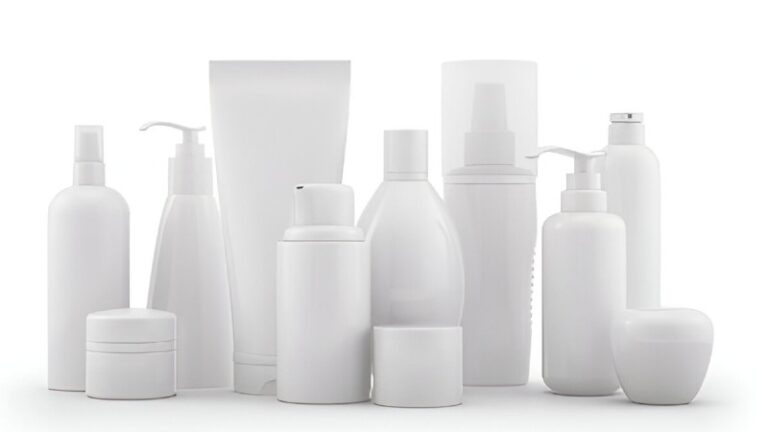The beauty industry is booming globally, with a market value exceeding $50 billion and continuously growing. While many consumers are becoming more conscious of sustainable practices, the environmental impact of beauty products extends far beyond plastic waste and packaging. From ingredient sourcing to production processes and post-consumer disposal, every stage of a product’s lifecycle has ecological consequences.
Understanding the Hidden Costs of Beauty
When we think about environmental issues in beauty, the conversation often revolves around plastic packaging. However, the industry’s footprint includes:
- Deforestation from ingredient sourcing
- Water depletion and contamination
- Carbon emissions from production and logistics
- Microplastic pollution from synthetic ingredients
- Ethical and social impacts affecting local ecosystems and communities
Each of these factors contributes to the broader environmental crisis while often remaining invisible to consumers.
Deforestation and Unsustainable Ingredient Sourcing
Palm oil, mica, and exotic botanicals are key ingredients in many beauty products. Unsustainable sourcing practices can lead to:
- Deforestation: Palm oil plantations in Southeast Asia have caused large-scale forest loss, threatening wildlife like orangutans and tigers.
- Soil degradation: Intensive farming of ingredients like soy and certain herbs depletes nutrients and reduces soil fertility.
- Community displacement: Indigenous communities can be displaced due to plantation expansion, raising ethical concerns alongside environmental ones.
For example, an estimated 300 football fields of rainforest are cleared every hour for palm oil cultivation alone. While palm oil alternatives exist, sourcing sustainably certified palm oil is still limited.
Water Consumption and Pollution
The beauty industry is a significant consumer of freshwater, with billions of liters used annually in production. Water is consumed at multiple stages:
- Ingredient cultivation: Crops like almonds, soy, and lavender require high water input.
- Manufacturing: Cosmetic formulations, mixing, and product finishing demand large water volumes.
- Consumer use: Products like shampoos, face washes, and body lotions require rinsing, leading to wastewater generation.
Unfortunately, much of this wastewater contains synthetic chemicals, dyes, and microplastics, entering rivers and oceans, affecting marine ecosystems. According to recent studies, microplastics from cosmetic exfoliants alone affect over 600 marine species.
Carbon Footprint and Supply Chain Emissions
The cosmetic supply chain is energy-intensive. Factors contributing to the carbon footprint include:
- Extraction of raw materials
- Manufacturing and processing energy usage
- Transportation from suppliers to factories and retailers
- Consumer use, including hot water for washing products
For instance, consumer usage can account for up to 60% of a product’s total carbon emissions. A typical shampoo bottle, considering production, packaging, and consumer use, can emit over 2 kg of CO₂.
Microplastics and Synthetic Chemicals
Beyond visible packaging, many beauty products contain synthetic ingredients that generate microplastics and chemical pollutants:
- Microbeads: Found in exfoliants, toothpastes, and scrubs, they pass through water treatment plants and accumulate in oceans.
- Parabens and phthalates: Preservatives and plasticizers that persist in the environment and may disrupt aquatic ecosystems.
- Synthetic fragrances: Composed of volatile organic compounds (VOCs) contributing to air pollution.
These chemicals not only threaten wildlife but can also bioaccumulate, ultimately impacting human health.
Ethical and Social Implications
Environmental sustainability in beauty is intertwined with social responsibility. Key concerns include:
- Child labor: Mica mining in India has been linked to exploitative labor practices.
- Fair trade sourcing: Many communities cultivating botanicals or natural ingredients lack fair compensation.
- Animal welfare: Though many brands claim cruelty-free status, animal testing continues in regions like China.
Addressing these issues requires holistic approaches that combine ecological and ethical solutions.
Emerging Sustainable Practices in Beauty
While challenges are vast, the industry is evolving. Here are some innovative solutions:
Green Chemistry and Biodegradable Formulations
Green chemistry minimizes hazardous substances in formulations, reduces energy use, and produces biodegradable products. Examples include:
- Replacing synthetic polymers with plant-based alternatives
- Developing waterless formulations (solid shampoos, dry serums) to reduce water use
- Using enzymatic preservatives that naturally degrade post-use
Eco-Friendly Packaging and Circular Economy
Beyond recyclable plastics, brands are exploring:
- Refillable containers to reduce single-use packaging
- Compostable packaging from bamboo, paper, and algae-based materials
- Closed-loop recycling programs with collection incentives for consumers
Ethical Sourcing and Supply Chain Transparency
Leading brands now map the entire supply chain, ensuring:
- Sustainable agriculture practices
- Fair wages and safe working conditions for farmers
- Reduction in carbon emissions through local sourcing where possible
Consumer Empowerment and Education
Consumers play a vital role in promoting sustainability. Actions include:
- Choosing certified products (e.g., Leaping Bunny, FSC, Ecocert, COSMOS)
- Minimizing over-purchasing and reducing product waste
- Participating in recycling or refill programs
- Researching brand practices to avoid greenwashing
Environmental Impact by Product Type
| Product Type | Key Environmental Impact | Sustainable Alternatives |
|---|---|---|
| Shampoo & Conditioner | High water usage, plastic packaging, microplastics | Solid shampoo bars, refillable bottles, biodegradable ingredients |
| Makeup | Chemical pollution, microplastics, deforestation from ingredients | Organic minerals, plant-based pigments, recyclable packaging |
| Nail Products | Toxic solvents, microplastics in glitter, non-recyclable bottles | Water-based polishes, “x-free” formulas, take-back recycling programs |
| Sunscreen | Chemical contamination harming coral reefs | Mineral-based, reef-safe sunscreen with biodegradable packaging |
| Fragrances | VOC emissions, animal-derived ingredients | Synthetic-free, vegan fragrances, refillable glass bottles |
Innovation for a Sustainable Future
The beauty industry has the potential to be a catalyst for environmental change. Beyond consumer choices, companies must innovate through:
- Adopting circular economy principles to minimize waste
- Using lifecycle assessments to reduce environmental impact at each stage
- Investing in renewable energy for production facilities
- Engaging in research on biodegradable, non-toxic, and low-impact ingredients
Consumers, too, have power. By prioritizing brands that combine transparency, ethics, and environmental responsibility, we collectively drive the industry toward a greener future.
Conclusion
The environmental impact of the beauty industry extends far beyond what meets the eye. From microplastics and chemical pollution to deforestation, water depletion, and carbon emissions, the ecological footprint is significant. However, with innovative solutions like green chemistry, biodegradable formulations, circular packaging, and ethical sourcing, both brands and consumers can participate in positive change.
Choosing sustainable beauty products is not merely a trend—it’s a responsibility. Every product we purchase, every refill we choose, and every ingredient we scrutinize contributes to protecting the planet for future generations. By raising awareness and embracing sustainability, the beauty industry can truly align glamour with ecological stewardship.
Frequently Asked Questions (FAQs)
What is the environmental impact of the beauty industry?
The beauty industry contributes to plastic pollution, microplastic contamination, deforestation, water depletion, carbon emissions, and chemical pollution, affecting ecosystems, wildlife, and human health.
Which beauty products are most harmful to the environment?
Products like shampoos, conditioners, nail polishes, and sunscreens have significant environmental impact due to high water usage, toxic ingredients, plastic packaging, and microplastics. Makeup ingredients sourced unsustainably also contribute to deforestation and habitat loss.
How can consumers reduce the environmental impact of their beauty routine?
- Choose products with eco-friendly, recyclable, or biodegradable packaging.
- Opt for refillable and waterless formulations.
- Purchase sustainably sourced and cruelty-free ingredients.
- Participate in recycling or take-back programs.
What certifications should I look for when buying sustainable beauty products?
Look for certifications such as Leaping Bunny (cruelty-free), FSC (responsible packaging), Ecocert and COSMOS (organic and bio-based ingredients), and B Corp (overall company sustainability practices).
Are biodegradable and compostable beauty products really better for the environment?
Yes, biodegradable and compostable products break down safely after use, reducing pollution and contributing to a circular economy. Choosing such products also encourages brands to adopt environmentally responsible practices.


